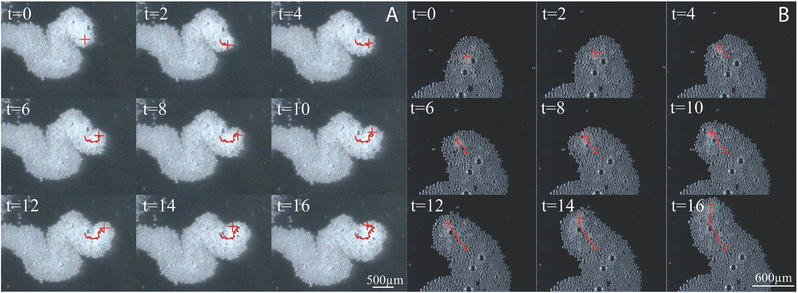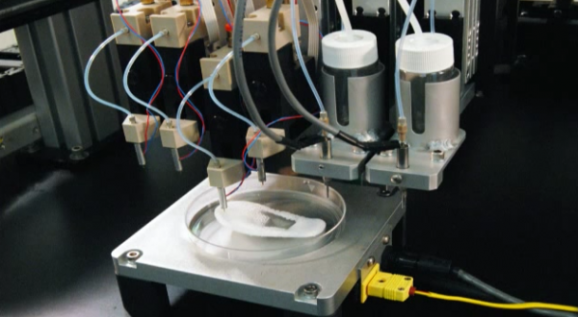University of Sheffield: 3D Printed Micro-Rockets Fueled for Thrust by Enzymes May Soon Deliver Drugs in Human Body
 When you are really, really sick, often all you want to know is that help is on the way. As doctors see you, write prescriptions and offer treatments, it’s often still a waiting game before you feel better. But what if drugs were being delivered to the body via micro-rocket? That sounds pretty impressive from the start, and trust us, as you find out more about what researchers from Chemical and Biological Engineering at the University of Sheffield are working on, the process is further astounding.
When you are really, really sick, often all you want to know is that help is on the way. As doctors see you, write prescriptions and offer treatments, it’s often still a waiting game before you feel better. But what if drugs were being delivered to the body via micro-rocket? That sounds pretty impressive from the start, and trust us, as you find out more about what researchers from Chemical and Biological Engineering at the University of Sheffield are working on, the process is further astounding.
A highly respected learning and research institution in the UK, the University of Sheffield is responsible for heady research, and we see their name popping up often from working to develop additive manufacturing potential within aerospace to exploring 3D printing in water technology, and more. With a dedication to ‘tackling some of the world’s greatest challenges,’ their researchers take on the big challenges of today. Now, they are responsible for having created a powerful drug delivery system via 3D inkjet printing, working on previous conventions that due to the tools at hand were just too ‘laborious’ to offer great future potential.
 With the use of reactive inkjet printing (RIJ), the researchers expose two different solutions to each other, thus creating a new one or causing a change in form—and here the main result is autonomous, silk-based rockets with varied catalyst distribution and direction of movement. This new technology, technique, and findings, are explained thoroughly in ‘Reactive Inkjet Printing of Biocompatible Enzyme Powered Silk Micro-Rockets,’ by David A. Gregory, Yu Zhang, Patrick J. Smith, Xiubo Zhao, and Stephen J. Ebbens—just published in small.
With the use of reactive inkjet printing (RIJ), the researchers expose two different solutions to each other, thus creating a new one or causing a change in form—and here the main result is autonomous, silk-based rockets with varied catalyst distribution and direction of movement. This new technology, technique, and findings, are explained thoroughly in ‘Reactive Inkjet Printing of Biocompatible Enzyme Powered Silk Micro-Rockets,’ by David A. Gregory, Yu Zhang, Patrick J. Smith, Xiubo Zhao, and Stephen J. Ebbens—just published in small.
While this concept is not new and studies regarding this basic idea have been going on for at least a decade, University of Sheffield researchers have found a way to streamline it substantially with 3D inkjet printing.
“Production of small-scale devices that can autonomously generate thrust via catalytic reactions within fluidic environments has become an increasingly active field of research over the last ten years,” begin the researchers in their paper.

a) Schematic of the RIJ process for manufacturing catalytic micro-rockets. b) overview of silk rocket RIJ array, c) top view of a symmetrically active silk rocket, d) symmetrically active rocket, and e) Janus micro-rocket f) single ink micro-rocket (symmetrical) and g) Janus micro-rocket.
As interest has grown in seeing this technology progress, the focus is on applications such as:
- Environmental monitoring and remediation
- In vivo drug delivery and repair
- Lab on a chip diagnostics
With RIJ technology, there’s much greater potential as compared to lithographic fabrication processes currently ongoing in labs.
“The conventional lithographic approach to control the shape and material distribution within small-scale devices places significant limits on scalability and prevents responsive design and testing,” say the researchers in their paper.
Through employing the world of 3D technology and printing, they are able to make micro-rockets, composed of silk scaffolds, and ‘highly biocompatible and non-biofouling.’ At 300 microns in length and 100 microns in diameter (as thick as one human hair), the mini-rockets autonomously propel themselves powerfully but they do require bio-fluids acting as their ‘fuel.’
This could have substantial implications in cancer treatment, as feasibly the 3D printed rockets could seek out and destroy cancer cells without causing any detriment to the human body. Not only that, more progressive benefit is found in using this new technology as it’s more affordable than trying to use devices like polystyrene beads, carbon nanotubes or metal, which require a coating such as platinum, and obviously lead to concerns regarding safety within the body.
“By using a natural enzyme like catalase and silk which are fully biodegradable, our devices are far more biocompatible than earlier swimming devices,” said Dr. Xiubo Zhao, from The Department of Chemical and Biological Engineering at Sheffield. “The inkjet printing technique also allows us to digitally define the shape of a rocket before it’s produced. This makes it a lot easier to optimize the shape in order to control the way the device swims.”

Still frames for A) a fully active and B) a Janus micro-rocket in 2% human serum solution containing 3% wt/V aqueous hydrogen peroxide fuel. Red lines indicate trajectories.
The inket printer’s ‘material’ consists of dissolved silk combined with an enzyme, presented in single droplet form by the MicroFab ‘Drop on Demand’ printer, relying on Jetlab software, and employing four single nozzle print heads (60 μm diameter) which are each attached to their own individual reservoir.
The 3D inkjet printer builds up layers of ink, and they are responsible for making a column of the rocket. Beyond that, the researchers have found that the secret is then is exposing the silk to methanol which converts it into a secondary structure allowing for the capture and retention of the enzymes within. The enzyme is then what reacts and acts as the catalyst, with bubbles simply propelling the rocket.
Using the silk scaffolds also eliminates the need for surfactant additives. The process is safe, biodegradable, and affordable, offering the true possibility for realistic use in applications such as drug delivery, tissue engineering, and enzyme immobilization. And as the researchers state in conclusion: “…evidenced by much recent research attention, the future potential to further develop these micro-rockets is significant.”
Research for this valuable project was funded by grants from the Engineering and Physical Sciences Research Council (EPSRC). Discuss further in the 3D Printed Micro-Rockets forum over at 3DPB.com.
[Source: University of Sheffield via BioScience Technology]Subscribe to Our Email Newsletter
Stay up-to-date on all the latest news from the 3D printing industry and receive information and offers from third party vendors.
Print Services
Upload your 3D Models and get them printed quickly and efficiently.
You May Also Like
Metal Powder Supplier Elementum 3D Added to $46B Air Force Contract
Elementum 3D, a Colorado-based developer and supplier of metal powders used in additive manufacturing (AM), announced that the company has been added to the vendors list in the fourth on-ramp...
Ursa Major Lands $28.6M AFRL Deal for 3D Printed Draper Engine Flight Demo
The US Air Force Research Laboratory’s (AFRL’s) Rocket Propulsion Division at Edwards Air Force Base has awarded a $28.6 million contract to Ursa Major for follow-on work related to the...
3D Printing Financials: Rocket Lab’s Record-Breaking Year and Over 20 Launches Coming in 2025
Rocket Lab (Nasdaq: RKLB) closed 2024 with its best year yet. The company launched more rockets, signed more contracts, and expanded deeper into spacecraft and satellite production than ever before....
US Air Force Taps Beehive to Study 3D Printed Jet Engines
Propulsion 3D printing firm Beehive Industries secured a contract from the U.S. Air Force Life Cycle Management Center through SOSSEC. SOSSEC is a company that manages Other Transactions Authority (OTA)...


































